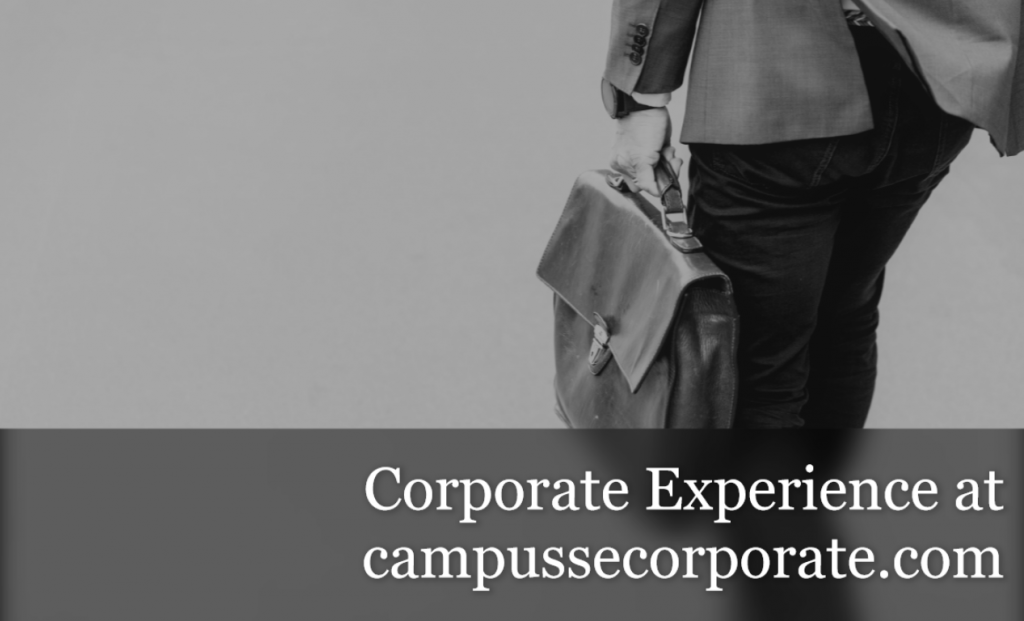EY Corporate Experience by Damini Dasgupta , Consultant at EY. She has also provided suggestions for freshers.

Hi everybody. Hope you’re all doing well!
I am a 2020 batch post-graduate from the Department of Statistics, Delhi University. I secured an offer during my college days, with Ernst and Young, and I am working as an Associate Consultant in Technology Consulting. Currently, I am posted in Bangalore with a team strength of 400+ People.
My current engagement includes building a machine learning model to predict the final cost of goods for a major FMCG client. We initially explored the raw data to identify what factors would be most important to build the model. After that, we combined various data cleaning and feature engineering techniques to ensure a smoother fit to the data. Finally, we used machine learning algorithms to fit a model to the data. The given solution was developed using Python and MS Azure.
As a consultant, my job is to communicate with the client on a daily basis and during this process I have learnt that business acumen and technical skills both play a vital role to grow professionally . Soft skills are gradually improved with email writing, presentation, and story-telling capability. The ability to communicate your thoughts and ideas to your team members and your client is important.
Major learnings
At EY, every day you learn and do something new. There are so many new things that I’ve learnt, but here are a few of the major ones which I think would help students looking for a career in data science:
- When you start with actual data science projects, the first thing you notice is the sheer size of the dataset. You’ll go from seeing datasets with 200 rows and 10 columns, to ones with lakhs of rows and hundreds of columns. If possible, familiarize yourself with datasets of this size. Kaggle and Spotl are sites where you can get free access to these kinds of datasets.
- As students, we’re pointed towards programming software like R or Python. While these are good software for building the actual model, MS-Excel will be your best friend in helping you analyse the data. Learn how to make pivot tables, how to pull up relevant charts, other Excel functions like VLOOKUP, and how to do EDA via Excel.
- Model explanability is much more important than simply the goodness-of-fit statistic. You should be able to explain why the model is over/under-predicting certain values, and not focus only on the R2 statistic. Further, I’ve learnt that model explanability only comes when one is highly familiar with the data – this reiterates the need for skills like EDA and data cleaning.
- Finally, I’ve learnt that there’s always a way. When one door closes, another one opens, you just have to find it.
I understand that students may feel confused about the gap between the academic and industry sector, so here are my 2 cents which I hope will help:
- Firstly and most importantly, strengthen your basics. Do not deep dive without learning to swim in the shallow end. Concepts of descriptive statistics, probability, random variables, correlation, regression, and inferential statistics will be required. I used to study from the following books:
- Fundamentals of Statistics ( Volumes 1 and 2 ) – Gun, Gupta, Dasgupta
- Outline of Statistical Theory ( Volumes 1 and 2 ) – Gun, Gupta, Dasgupta
- Fundamentals of Mathematical Statistics – Gupta and Kapoor
- For any ML or DL algorithm, make sure to always learn the mathematics behind it. You would also need to know the basics of linear algebra and calculus. Some books you can refer to:
- For Linear Algebra – Higher Algebra by S.K. Mapa
- For Calculus – Class 12 differential and integral calculus is sufficient
- For Machine Learning – Elements of Statistical Learning – Jerome H. Friedman, Robert Tibshirani, Trevor Hastie
- Most colleges do not have R or Python as a part of their curriculum – that’s okay! You can learn the basics from Udemy, Coursera, or simply YouTube. After that, well – Google was my best teacher.
- Don’t neglect your soft skills. Regardless of whether you end up in a client-facing role, honing your soft skills will always benefit you. If you are unsure of how to proceed, there are many good courses on soft skills available on Udemy/Coursera as well.
- Finally, please ensure you have a proper resume. Leaving aside the actual content, your resume should be neat and clean, with no grammatical or punctuation errors.
Do not worry
I hope this benefits all the students out there who are currently wondering what to do. Don’t worry, we were all in the same boat once! And eventually, we all sailed through – and so will you. Do not say no to any opportunity, as you never know what that might be a door to. And remember – opportunities will always come your way, it is up to you, what you decide to make of them.
All the very best!
Like this EY Corporate Experience, you too share your experiences with us. For any suggestion, please reach out to us on LinkedIn.
Find some of the resources that helped us here.
You can create an impact by talking about your interview experience. Please fill this form .
You can read other articles here.
Cheers and Best!